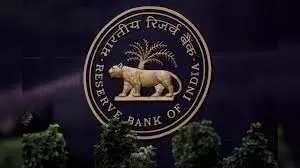AA Edit | Steepest Rate Cut in 5 Years to Boost Demand, Growth
This is the steepest rate cut since May 2020, when the MPC lowered the rate by 75 basis points to fight the Covid-induced economic shock

The Reserve Bank of India-led (RBI) Monetary Policy Committee (MPC) has slashed repo rate by a larger-than-expected 50 basis points and reduced the cash reserve ratio (CRR) by one per cent to three per cent in an attempt clearly aimed at boosting domestic demand to support the economic growth.
This is the steepest rate cut since May 2020, when the MPC lowered the rate by 75 basis points to fight the Covid-induced economic shock. After the cumulative reduction of 100 basis points, the repo rate, which banks pay for borrowing money from RBI, stands at 5.5 per cent — the lowest since August 2022. However, the Central bank has changed its policy stance from accommodative to neutral, suggesting that no more rate cuts are expected further.
The RBI projected the GDP growth for 2025-26 at 6.5 per cent, supported by private consumption and traction in fixed capital formation. It believes that the sustained rural economic activity — due to good monsoon — bodes well for rural demand, while continued expansion in the services sector is expected to support the revival in urban demand.
The Central bank also expects investment activity to improve in light of higher capacity utilisation, improving balance sheets of financial and non-financial corporates, and government’s capital expenditure push.
The surprise element in the policy meeting was the RBI’s decision to bring down the CRR — the ratio which banks are required to park in liquid assets — to the historic low of three per cent. It was at this level from March 2020 to February 2021 to fight the impact of the Covid pandemic on the economy.
This move will release Rs 2.5 lakh crore additional liquidity into the economy enabling banks to lend more to borrowers. The surplus liquidity coupled with lower interest rates is expected to boost consumer demand and capital expenditure, lending crucial support to the domestic market.
With inflation expected to remain around 3.7 per cent during the current financial year, which is lower than the RBI’s medium term target of four per cent, the RBI’s policies are expected to align more towards economic growth through boosting of domestic demand.
RBI governor Sanjiv Malhotra’s post-policy remarks also make it clear that the central bank is more concerned about supporting economic growth as the global environment remains plagued by tariff wars and restrictive trade policies.
In another decision impacting borrowers, the RBI raised the loan-to-value (LTV) ratio for lending against gold to 85 per cent for loans under Rs 2.5 lakh from the present 75 per cent.
This will help people who want to raise money by pledging gold ornaments.
While the RBI’s decisions make borrowing easy and cheaper, the country cannot exclusively depend on monetary policy for its economic growth. It should aim at achieving higher output in manufacturing and services and ensure that people have enough money to buy what is produced in the country. The RBI has done its bit. Now it is over to the Central and state governments to do theirs.
